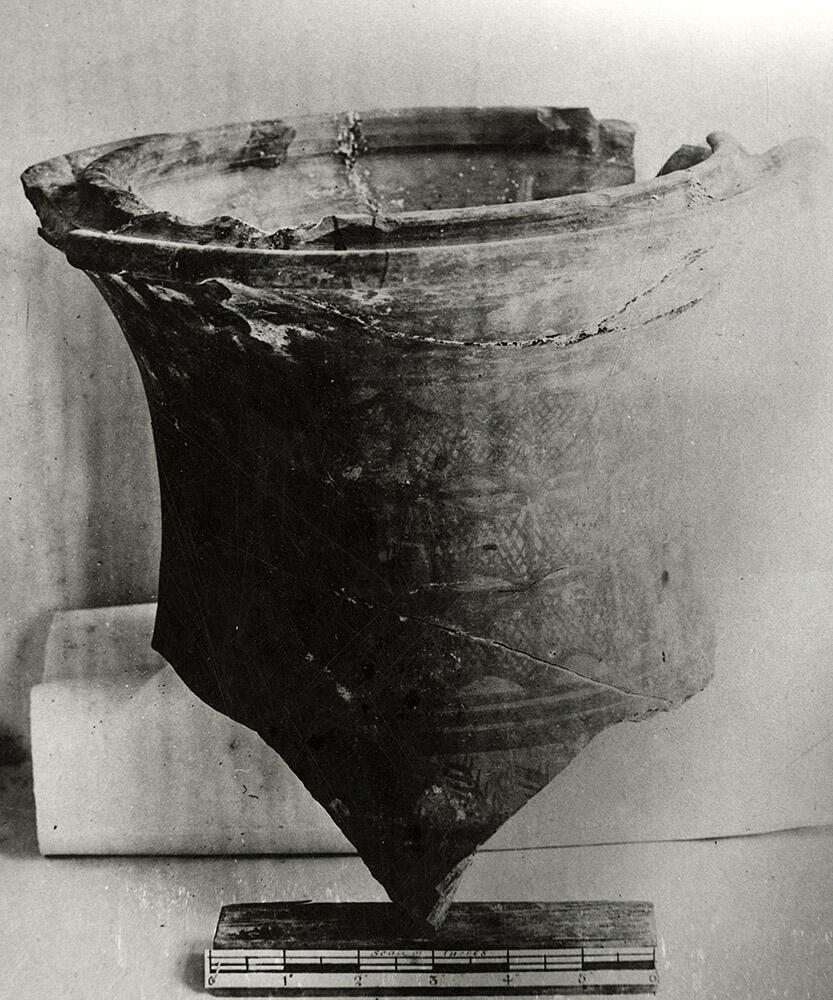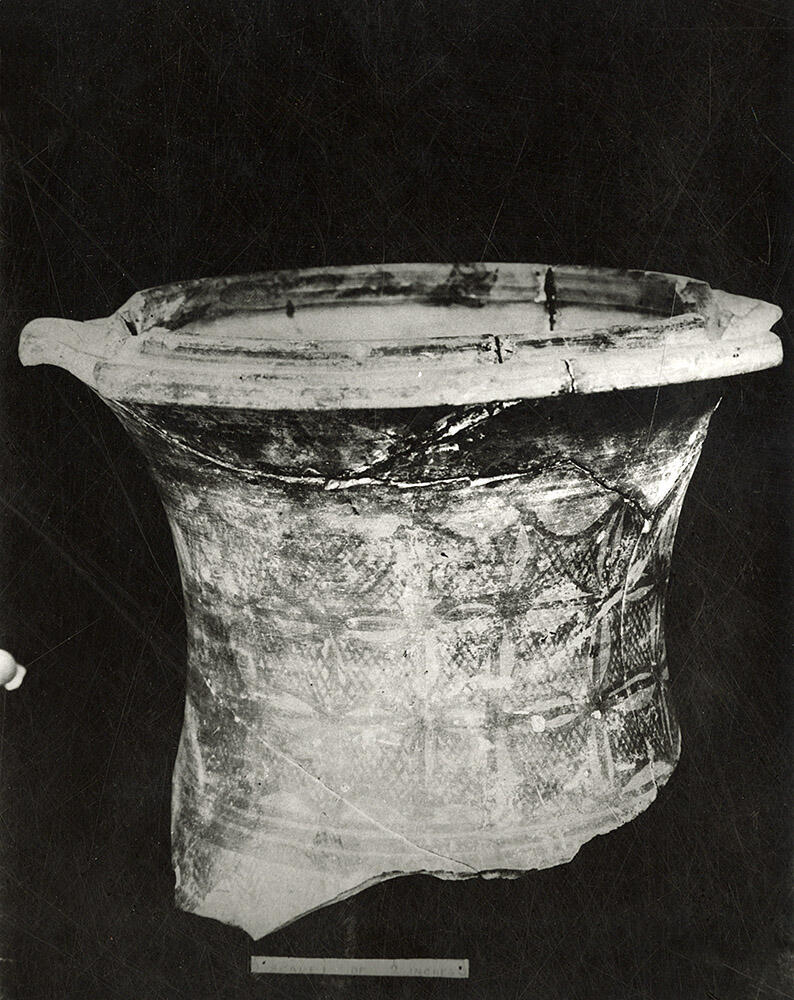There are two photographs of the painted neck of an oval jar (A442) discovered in Mound F. They are taken from slightly different angles to capture details of the rim, curvature and the painted motifs. These details would be valuable as the archaeologists were beginning to develop typologies of the pottery from Harappa and Mohenjodaro.
A442: Painted neck of an oval jar
"The first task during the past season was the expansion of a part of the long trench drawn across site F in 1920-21, where certain well-preserved walls pointed to the possible survival of a large dwelling. On the resumption of work at this point one of the walls referred to was followed up for a length of about 80 feet. There were also two other walls in a fairly good condition running parallel to it on either side. These, however, turned out to be all that had survived of the buildings. That the structure was an important one is evidenced by several interesting objects which came to light in it. In 1920-21 it had yielded a well-preserved seal and a pair of faience bangles of excellent workmanship; and it has now given us three more seals (Plate XIX) and the painted neck of a large earthen jar (Plate XXI, a). The decoration on the latter, which was executed in black before the vessel was burnt, consists of a broad band with three rows of inter-laced circles and a scalloped border at either end. The patterns beneath this band represent reeds or ears of corn."
- Daya Ram Sahni, 1926. Annual Report Of The Archaeological Survey Of India 1923-24., pg 52. Pl. XXI, a.
Extension at the north-western end of Trench A
"Westward along the north-western end of Trench A Mr. Sahni made another extension. It was 90 ft. long from east to west and averages 55 ft. in width. It was excavated to a depth of 4 ft. 6 in. only and revealed several fragmentary walls and broken pavements of the IInd stratum between 2 ft. to 3 ft. 3 in. below the surface, and a few walls of the IIrd stratum at a depth of 4 ft. 6in.
...
"Along the eastern half of the southern edge of this extension were found a squat bi-convex pottery vase (A406, ht. 2.13 in., Pl LXXXII, 9) which contained six assorted miniature vases ranging in height from 0.5 to 0.65 in, (PL CXXXIX, 53-55 and 61-63), and the painted neck of an oval jar (A442) similar in shape and painting to the well preserved jar found by Mr. K. N, Dikshit at Mohenjo-daro.
- Madho Sarup Vats, Excavations at Harappa: Being an account of archaeological excavations at Harappa carried out between the years 1920-21 and 1933-34. Volume I - Text; Volume II - 139 Plates., pg 24. No comparable plates."
This photo is the rim portion of a diagnostic Harappan painted vessel that is found throughout the entire Harappa Phase. The vessel is painted with black designs on red slip and has an elongated flaring shape with a rounded base. The base was set in a ring stand when being used in the home. Complete examples with similar painted motifs have been found in the cemetery excavations by the Harappa Archaeological Research Project.
See Kenoyer, J. M. 1998. Ancient Cities of the Indus Valley Civilization. Karachi, Oxford University Press, pp. 153-154, Fig. 81, and 8.11.
See also painted burial pottery from more recent excavations.
- Jonathan Mark Kenoyer, 2023.




